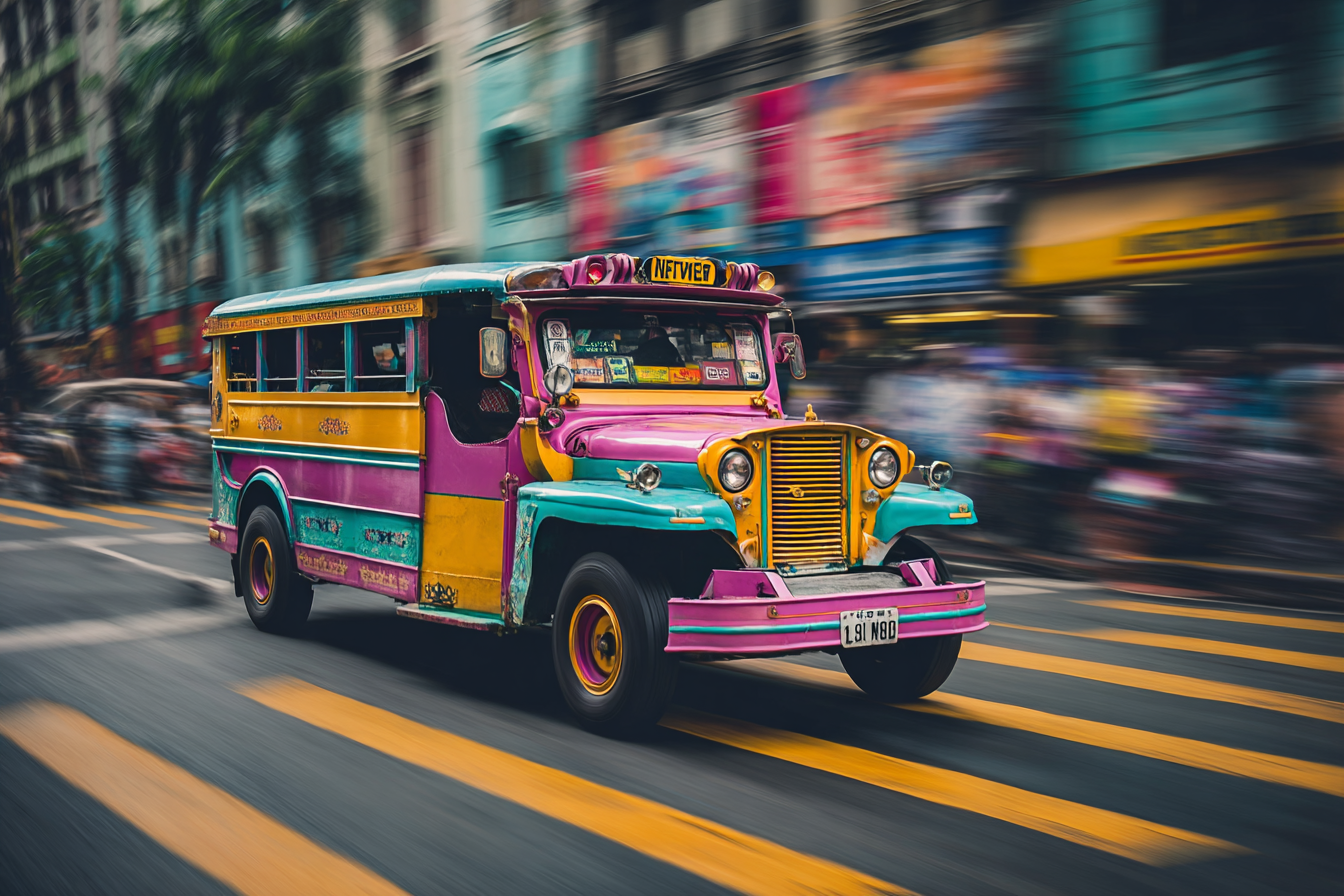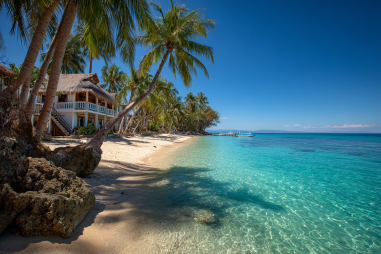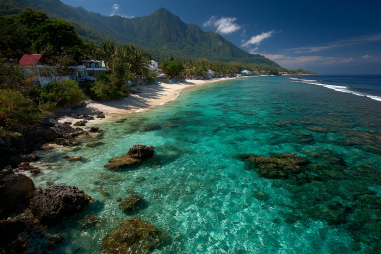Traveling through the Philippines is an exciting journey that offers more than just breathtaking sights and friendly locals. The country’s vast archipelago of over 7,000 islands presents unique transportation challenges and opportunities, making the experience of getting from point A to point B an adventure on its own. Whether you’re hopping on a plane to reach a far-flung island, riding a colorful jeepney through bustling city streets, or catching a ferry between islands, understanding the transportation options will help make your trip smoother, safer, and more enjoyable.
Overview of Transportation in the Philippines
The Philippines’ transportation network is as diverse as its landscapes. Given its geography, traveling often involves a combination of air, sea, and land transport. The country’s infrastructure has evolved significantly over the years, but you can still expect a range of options—from modern planes and express ferries to traditional jeepneys and tricycles. Each mode of transportation serves different needs depending on your budget, time constraints, and adventure appetite. For newcomers, navigating this complex system may feel overwhelming at first, but with a bit of preparation, it becomes part of the rich travel experience.
Domestic Flights and Major Airports
When it comes to long-distance travel across the Philippines’ islands, flying is often the fastest and most convenient option. The country boasts several domestic airlines including Philippine Airlines, Cebu Pacific, and AirAsia Philippines, which together cover an extensive network of routes connecting major cities and tourist hotspots.
The main international gateway is Manila’s Ninoy Aquino International Airport (NAIA), but for domestic flights, regional airports like Mactan-Cebu International Airport, Clark International Airport, and Francisco Bangoy International Airport (Davao) also play pivotal roles. These airports have regular flights to key tourist destinations such as Boracay (via Caticlan Airport), Palawan (via Puerto Princesa Airport), and Bohol (via Tagbilaran Airport).
Booking flights in advance is advisable, especially during peak seasons like Christmas, Holy Week, and summer holidays. Flight times are usually short, ranging between 30 minutes to two hours depending on the route, making flying an efficient way to maximize your travel itinerary.
Bus and Ferry Services Between Islands
For travelers who want to experience overland and sea routes or prefer a budget-friendly option, buses and ferries are excellent choices. The Philippines has an extensive bus network that links major islands and cities. Operators like Philtranco, Ceres, and Partas provide long-distance trips equipped with air conditioning and sometimes Wi-Fi. While bus travel can be time-consuming due to traffic and road conditions, it’s an affordable way to see the countryside and interact with locals.
Island hopping without ferries is impossible in the Philippines. Inter-island ferry services range from large, modern vessels to smaller, traditional boats called bancas or pump boats. Popular ferry companies include 2GO Travel and Montenegro Shipping Lines, which operate routes between Luzon, Visayas, and Mindanao regions. Travel times can vary widely: a short ferry ride may take 30 minutes to an hour, while longer routes can span several hours or even overnight.
It’s important to check schedules in advance, especially outside major cities, since ferry departures can be less frequent and sometimes subject to weather conditions.
Local Transport: Jeepneys, Tricycles, and Taxis
Once you’re within a city or town, public transport gets more colorful and distinctive. The iconic jeepney is arguably the Philippines’ most famous form of transport. These vibrantly decorated, open-air vehicles are an affordable way of navigating short to medium distances within urban and rural areas. Jeepneys follow fixed routes, and fares are cheap, though they can get crowded during rush hours.
For shorter trips or to reach less accessible spots, tricycles and motorized pedicabs are convenient options. They are essentially motorcycles with a sidecar and can navigate narrow streets and alleys where larger vehicles cannot. They’re often the best choice for door-to-door service in smaller towns and communities.
Metered taxis are widely available in cities like Manila, Cebu, and Davao. They provide a more comfortable and quicker ride, especially when traveling with luggage or in groups. Make sure taxis use their meters or agree on a fare before starting to avoid being overcharged.
Booking Tips and Travel Times
To make the most of your travels, advance booking is highly recommended, particularly for flights and inter-island ferries during busy periods. Websites and mobile apps for airlines and ferry companies offer easy online booking and the ability to check schedules. For buses, booking at terminals or through local travel agencies is common practice.
Travel times can vary greatly depending on the mode of transport and the traffic or weather conditions. Urban areas like Metro Manila are infamous for congestion, so plan extra time. Inter-island journeys can also be impacted by typhoons or rough seas, so always check weather forecasts and allow flexibility in your itinerary.
Accessibility Considerations
Traveling in the Philippines as a person with mobility challenges or other accessibility needs requires some planning. While major airports and larger ferry terminals have basic facilities, local transport like jeepneys and tricycles may not accommodate wheelchairs or other mobility aids easily.
For those needing assistance, taxi services or private transfers arranged through hotels or travel agencies offer better options. It’s advisable to communicate your accessibility requirements ahead of arrival to ensure smooth transportation. Some newer buses equipped with ramps and designated seating provide better accessibility in urban areas, but availability varies widely outside of major centers.
Safety and Cost-Saving Advice
Safety is paramount when traveling in any country, and the Philippines is no exception. Always keep an eye on your belongings, especially in crowded vehicles like jeepneys and buses. If possible, avoid traveling at night on remote routes, as road conditions and security can sometimes be challenging.
Cost-saving tips include using local transport like jeepneys and tricycles for short trips, booking flights and ferries well in advance for discounts, and choosing non-aircon bus options if you are okay with a slower but cheaper ride. Negotiating tricycle fares before hopping on is common, so don’t hesitate to ask for the price upfront.
Combining Transport Modes for Itineraries
One of the best ways to explore the Philippines is by combining multiple transport methods to suit different parts of your journey. For example, fly into Cebu to save time, then take a ferry to nearby islands and use jeepneys or tricycles for local sightseeing. Conversely, if you have more time and want to explore on a budget, you might take buses for long-distance land travel complemented by occasional ferry rides.
Mixing transport also gives you a richer cultural experience—riding a jeepney offers a chance to mingle with locals, while a ferry ride across turquoise waters lets you appreciate the archipelago’s stunning geography. Planning routes thoughtfully and allowing flexibility will help you make the most of the Philippines’ diverse transportation landscape.
Getting around the Philippines can be as much a part of your adventure as the destinations themselves. With a variety of transport options ranging from speedy flights to colorful local rides, travelers can tailor their journeys to fit any style and budget. Armed with this knowledge and a spirit of exploration, navigating the islands becomes a memorable and rewarding experience.







